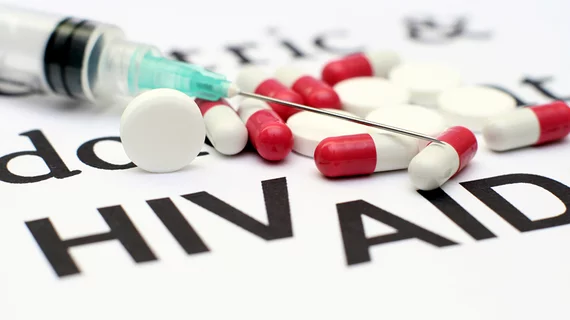HIV elevates risk of heart failure, stroke
A large-scale study of people living with HIV has linked the immune deficiency to an increased risk of CVD, in particular heart failure and stroke.
The research, published this month in the Journal of the American Heart Association, addresses the fact that as antiretroviral therapy continues to develop and disseminate, fewer people living with HIV (PLWH) are dying from AIDS-related causes. Modern medicine extended patients’ life expectancies by nearly a decade between 1996 and 2010, and the new reality is that over half of deaths in PLWH in high-income countries are non-AIDS-related.
“Among PLWH, mortality attributable to CVD is growing in importance,” first author Alvaro Alonso, MD, PhD, of the Rollins School of Public Health in Atlanta, and co-authors wrote in the journal. “The proportion of deaths attributable to CVD in PLWH in the United States more than doubled between 1999 and 2013, from 2% to 4.6%. Extensive evidence shows that HIV infection is an independent risk factor for coronary artery disease and, to a lesser extent, heart failure.”
HIV has already been linked to an elevated risk of HF and MI, but Alonso and his team also considered atrial fibrillation, peripheral artery disease (PAD), stroke and any CVD-related hospitalizations in their research. Their study pool numbered 19,798 HIV patients and 59,302 age- and sex-matched controls without the condition.
After an average follow-up of 20 months, the researchers said patients experienced 154 MIs, 223 cases of HF, 93 strokes, 397 AFib events, 98 cases of PAD and 935 CVD hospitalizations. Hazard ratios comparing people living with HIV to uninfected controls were:
- 1.3 for MI
- 3.2 for heart failure
- 2.7 for stroke
- 1.2 for atrial fibrillation
- 1.1 for PAD
- 1.7 for any CVD hospitalization
In this cohort, unlike others in previous studies, the presence of HIV only moderately increased the risk of MI and AFib, Alonso et al. said. PLWH also didn’t see a significantly increased risk of PAD. Associations were strongest for patients without a prior history of CVD and those younger than 50 years old.
“Direct HIV-induced myocardial damage, myocardial inflammation and fibrosis and some antiretroviral medications are potential mechanisms underlying this association,” the authors wrote. “Higher relative risk of HF among younger individuals could be because of a lower baseline risk in which small absolute increases in risk lead to higher relative ratios, or to higher prevalence of competing causes of HF among older individuals.”
The team said that since their study is the first to compare certain CVDs, like the incidence of AFib, in PLWH to an uninfected cohort, further research is needed to validate their results.
“Results from this study can inform future research by highlighting conditions that require increased attention and providing clues on the mechanisms that put PLWH at greater risk for certain CVDs compared with their uninfected counterparts,” Alonso and co-authors said. “More work is needed to help with recognition, prevention and treatment of CVD among PLWH.”

